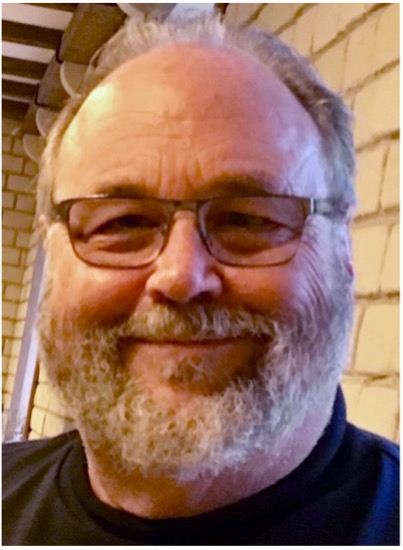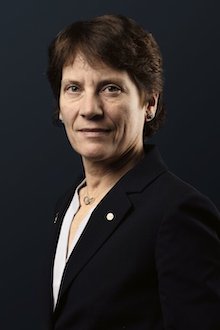- Home
- About SFG
- Annual Meeting
- Awards
- Membership
- Journal
- Resources
2021 Rosalind Kornfeld Award for Lifetime Achievement in Glycobiology
Our first 2021 Kornfeld Award recipient is Dr. Linda Baum. Linda has worked in the field of glycobiology since her graduate training in Peter Cresswell’s laboratory at Duke where one of her first publications was “Isolation and characterization of a galactose-specific carbohydrate binding protein from human lymphoblastic cells” (Baum, L.G. and Cresswell, P. Biochem. Biophys. Res. Comm. 173:1079, 1990). She completed her MD-PhD at Duke in 1986 and moved to UCLA to begin a residency in Pathology and postdoctoral fellowship with Jim Paulson. She published several papers while in the Paulson lab regarding sialic acids and influenza virus and was ultimately offered a position as an Assistant Professor in the Department of Pathology and Lab Medicine in 1989 as the first in-line female faculty member in that department. Linda rose through the ranks in this Department, becoming an Associate Professor in 1996, Professor in 2002, Vice-Chair for Academic Affairs in 2008, serving as Chief of the Division of Laboratory Medicine from 2010-2016, and also serving as Associate Dean, Medical Student Research and Scholarship, UCLA School of Medicine, from 2015-2020. Linda’s group at UCLA has made major contributions to our understanding of galectins in immunology. In 1995, her group published in the Journal of Experimental Medicine that galectin-1 is expressed in thymic epithelial cells and binds to thymocytes (Baum, L.G., Pang, M., et al. J. Exp. Med. 181:877, 1995). Shortly thereafter, her group published a seminal paper in Nature defining a novel role for galectin-1 in maturation of T cells (Perillo, N.L., Pace, K.E., et al. Nature 378:736, 1995). They showed galectin-1 initiated apoptosis in activated T cells, demonstrating the importance of cell-surface glycans in the their maturation. This paper is still highly cited today, and it began a decades long research interest for the Baum lab resulting in dozens of publications and invitations to speak all around the world. It also led to the “lectin lattice” model, which she and Fred Brewer described in a highly cited review article in Current Opinion in Structural Biology (Brewer, C.F., Miceli, M.C., et al. Curr. Op. Struct. Biol. 12:616, 2002). These results had a major impact not only on the field of Glycobiology, but also on Immunology. Linda then became an evangelist for Glycobiology among Immunologists, organizing Guest Society (Society for Glycobiology) Symposia at several annual meetings of the American Association of Immunologists, expanding knowledge of the importance of glycans beyond the bounds of the field. She has been recognized nationally and internationally for her work, was the Principal Investigator of numerous NIH grants and published more than 100 peer-reviewed journal articles, research papers and review articles. In recognition of her contributions to science, she was elected as an AAAS fellow in 2014. As a result of her scientific discoveries, Linda began to be asked to serve the field of Glycobiology, which she has done in spades. She served on a number of NIH study sections related to review of glycobiology grants (e.g. ICI from 2007-2011), on the Steering Committee of the Consortium for Functional Glycomics (2007-2012), on the Glycobiology Editorial Board (2003-2011, 2017-2019), as Associate Editor for Reviews for Glycobiology (2012-2016), on numerous committees for the Society for Glycobiology (Awards, Nominations, Publications, and Planning Committees), and maybe most importantly as President of the Society for Glycobiology in 2006. Importantly, Linda was President when the Society created the Rosalind Kornfeld Award for Lifetime Achievement to honor Rosalind! In addition to her service to the field, and true to Dr. Kornfeld’s legacy, Linda has worked throughout her career to promote equity, diversity and inclusion. Linda’s advocacy directly resulted in many of the benefits and programs in the UC system. Among other activities, in the 1990s she was part of a faculty group that worked to support a stop the clock policy for the first family event, and subsequently the addition of a second stop the clock option for a second family event. She also advocated for the inclusion of a diversity notation on a faculty member’s CV. She participated in numerous workshops at UCLA and national meetings for junior scientists on career choice, negotiation, work-life balance, and strategies for success. The Kornfeld Award was established to honor someone who exemplifies the contributions someone has made over their career, both scientifically and in service, to the field of Glycobiology. Linda has clearly done this beautifully. 2021 Kornfeld Honoree: Dr. J. Michael "Hawkeye" Pierce
Our second 2021 Award recipient is Dr. J. Michael Pierce, Distinguished Research Professor and Mudter Family Professor in Cancer Research at the Complex Carbohydrate Research Center/University of Georgia. Dr. Pierce has numerous professional accomplishments in the field of glycobiology and cancer research, but is also widely regarded for his sustained leadership and service to the field of glycobiology. Known to most as “Hawkeye”, Michael was born in Oklahoma City, OK, in 1951. He graduated with a B.S. in chemistry/biology from Oklahoma Baptist University in 1973 and did his Ph.D. studies under the direction of Stephen Roth at Johns Hopkins University. It was during this training period that his long-standing interest in glycosyltransferases began. Following postdoctoral work on lectins in the laboratory of Clinton Ballou at Berkeley, he joined the faculty of the Department of Cell Biology and Anatomy at the University of Miami School of Medicine in 1982. Hawkeye rose through the ranks at University of Miami before moving his laboratory to the University of Georgia in 1991, where he still resides today. His recruitment, and that of Kelley Moremen, to the University of Georgia and the Complex Carbohydrate Research Center ushered in a focus on mammalian and cancer glycobiology that is still strong at the Center. Hawkeye’s contributions to the field of glycoscience have largely centered on N-glycan processing, where he elucidated roles for MGAT5-mediated N-glycan branching in a wide range of processes, including cell adhesion, integrin function, and metastasis. Later in his career, his laboratory expanded its reach to investigate GPI anchors, glycomics and the bioinformatics solutions that surround glycomics. His most pertinent research contributions are embodied by the work on MGAT5, which helped establish a mechanistic understanding of how altered N-glycosylation influences the malignant phenotype of cells. He holds several patents related to his work on glycans and glycosyltransferases. His and Moremen’s laboratories also discovered the large family of animal lectins termed intelectins, which function in innate immune surveillance. Hawkeye has always stood out for his dedication and service to the field and the Society. He has led and participated in countless efforts to promote glycoscience and increase its visibility at the NIH. Notably, he served as Treasurer of the Society for Glycobiology for three terms, from 2004 to 2014, placing the Society on firm financial ground and navigating numerous operational challenges using his talents as a negotiator. He also ran a highly successful meeting in San Francisco as Society President, served as a Board member, and contributed his time to FASEB committees, study sections and editorial boards. His no-nonsense but gentle brand of leadership is respected everywhere he has served. At UGA, Hawkeye was instrumental in helping to grow the CCRC, expanding its focus into mammalian glycobiology and recruiting outstanding talent to the Center. He also led a P41 Research Resource grant for many years that provided new and impactful tools and methodologies for the field. He recently stepped down as the Co-PI for the NIGMS T32 Glycoscience Training Program. With his strong international presence and long list of invited talks from around the globe, Hawkeye is an outstanding ambassador for the field of glycoscience. Among his many endearing personal characteristics is Hawkeye’s ability to bring people together (like the lectins he studies!). Of particular note has been his ability to bridge the gap between US and Japanese glycoscientists and better connect these two glycoscience research communities. He has introduced many of us to future collaborators over the years and is the model emissary for glycoscience within the cancer research field and broader scientific community. And hey, what is substance without a little soul?! We will always remember Hawkeye’s role as Jake of the Blues Brothers and the musical renditions that he and Richard Cummings provided as banquet entertainment at those special annual meetings. Hawkeye has a gift for putting those around him at ease. This is a trait that emulates Rosalind’s personality, and the nature of this award. Rosalind had a unique and charming personality and was a leader at her institution and in the field of glycobiology. Hawkeye shares these attributes and is a most deserving candidate for an Award in her name. |


